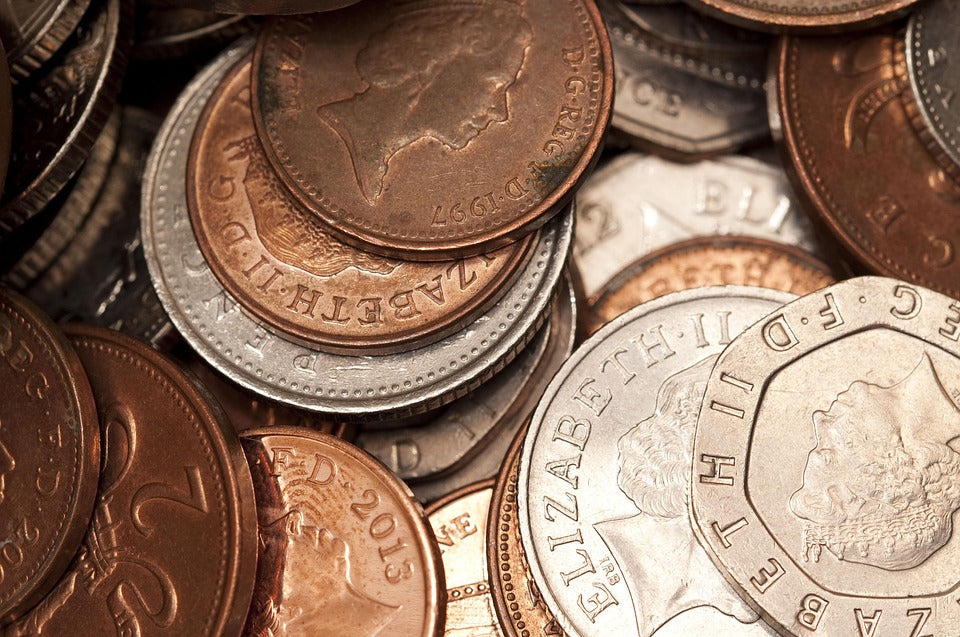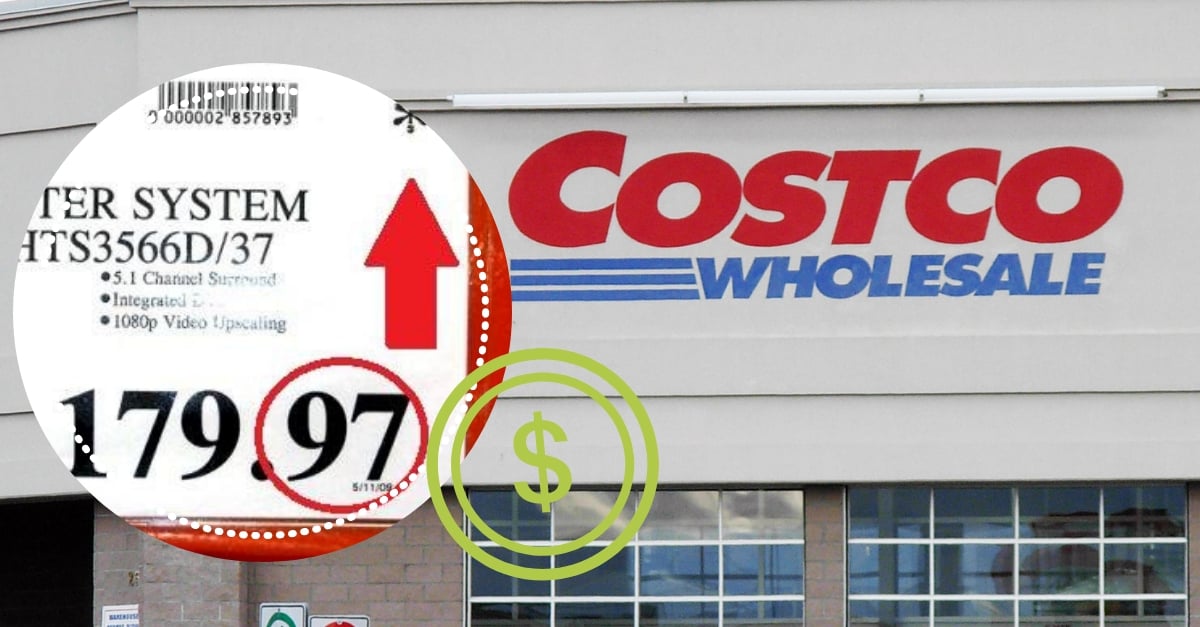The term may include sales to a retailer, wholesaler, broker, distributor, or business enterprise. Wholesaling usually involves sales in quantity and at a cost significantly lower than the average retail price. It has become an important step in the supply chain since the introduction of mass production and mass marketing techniques in the 19th century. Without wholesalers, manufacturers would have to market their products directly to a huge number of customers at high unit costs and buyers would have to deal with an inconveniently large number of suppliers.
Merchant wholesalers, the most important category, are independent businesses that buy merchandise in great quantities from manufacturers and resell it to retailers. Manufacturers' sales branches are businesses founded by manufacturers to sell directly to retailers. Merchandise agents and brokers represent various manufacturers; they usually do not buy the merchandise they handle but instead arrange for shelf space and the display of merchandise. So-called warehouse stores sell large quantities of goods at near-wholesale prices. Current lower renewable generation levels are set to increase compared with conventional generation, which supports electricity prices against rising commodity prices. At the same time, we observe fuel switch to lignite and coal due to tight gas markets, despite record high EU carbon allowance prices (German gas generation was down to 2.37 GW Aug. 22 from 5.9 GW the day before) on high gas prices.
What's more, since the end of July, natural gas flows from Russia to Europe have decreased. As a result, Germany's gas storage levels (currently at about 60% of available capacity compared with 33% under its five-year average) are marking all-time lows in second-half of 2021 after all-time highs in 2020. We believe Europe's natural gas storage deficit won't change before December, even if the continent were to benefit from a record-high LNG import and Russian Nord Stream volumes. The cost of this transition is high and has so far been mostly borne by households.
As for now, the German government is capping the green power levy at €65/MWh for 2021 and at €60/MWh for 2022, contributing about €11 billion from the federal COVID-19 measures budget. Commercial consumers, specifically against recent developments of increased climate targets, even more so will be incentivized to procure long-term contracted green electricity to remain competitive. Given conventional nuclear and coal plant closures, we believe gas and carbon prices after 2023 will play a bigger role in power prices, which we expect to remain relatively high. This is supported by EU leaders' ambition to establish 2030 targets, recently unveiled with the "Fit For 55" package, putting Europe on a net zero trajectory for 2050.
However, we believe the growth of renewables will entail more weather-related price volatility. This was the case in August 2021, with record-low hydro levels, combined with an unprecedented surge in European gas prices and carbon dioxide prices close to €60 per ton, lifting power prices well above €100 per megawatt-hour (/MWh) in Spain. Also, energy transition theme will be key in the political debate, especially in France and Germany, which will hold general elections over the next 12 months. In addition, we believe more political risks as upscaled European environmental objectives might not fit well with national interests, as we saw in France's inability so far to strike a deal on its nuclear reform. A recovery in power prices in 2022 and 2023, to well above 2019 levels in almost all European main markets, should underpin earnings for merchant power generators that provide baseload power, such as nuclear or hydro.
There are several large industrial projects under construction, mostly in northern part of the region, and consumption growth is therefore set to increase more rapidly than historical levels. Although power production today is somewhat concentrated in the northern part of the region, without further additions of capacity, this could further squeeze the balance in the system. This includes data centers, battery production, and heat pumps; but also energy-intensive sectors such as fossil free steel production, which are under pressure to decarbonize their industrial process by using more electricity and green hydrogen. The penetration of EVs is higher than other regions--in Norway, 50% of all cars sold have an electrical power line.
Although demand growth is difficult to predict, it will likely outperform the historical average over the next decade. Various industry experts expect as the growth can be 100 TWh or more through 2030, which implies a heavy growth rate as total demand now stands at about 400 TWh. From record lows in 2020, power prices in the Nordic region have rebounded stronger and much quicker than expected to start 2021. Nord Pool System spot prices are currently up about 10x but have averaged close to €50/MWh year-to-date, compared with €11/MWh for 2020, albeit with large differences between countries and price zones. Power producers that have not hedged a material part of their production are therefore likely to report a material upswing in earnings this year.
We observe that prices have been abnormally high over the summer months, somewhat unusual in a region that consume most electrical power in the colder winter months. In recent weeks, hydro reservoir levels shifted to below normal because of less precipitation than usual. This indicates that the prices could be materially higher over the coming winter period, if the trend continues.
Price differences between different regions continue to be high, which signals a lack of transportation capability and a generally tight power system in the area. In line with our expectation, however, power prices in the region have turned more volatile. The share of weather-dependent production varies significantly from day to day. We expect this trend to continue in the Nord Pool European power exchange, as more weather driven production comes on stream, mainly wind power. For the same reasons, we anticipate the increasing need for balancing power and congestion management to weigh on consumers' electricity prices .
We believe both factors underpin highly flexible gas-powered generation as key transition technology over the medium term, driving wholesale market prices as per the merit-order effect and security of supply measures by network operators. While just how much the wind industry must install to reach 20.1 GW remains in doubt, it says it cannot do it without some pain. Profit is falling, claim developers, following a reduction in the legislated power purchase prices for wind produced electricity, which kicked into force for all wind plant installed since the start of 2008. Spain's electricity retailers are required to buy wind power at the country's average wholesale electricity price, which is determined centrally. That price is augmented with an incentive payment decided by government, which is up for review in 2012.
A bonus is also available for wind plant operators who schedule their production a day ahead of delivery. This is partly due to Italy's large gas capacity (about 40% of total installed capacity and 48% of total production, with 39 GW of installed capacity and 145 TWh of production), which makes its power prices heavily dependent on PSV gas prices. These prices are also consistently higher than those of other European hubs.
Another element of the dependence on PSV gas prices is Italy's coal phaseout, which is set to end by 2028. We expect the largest closures in 2021 and 2025, with about 3 GW of closures in each of those years (for installed capacity of 7.1 GW at year-end 2020). By 2026, the only remaining coal units will be the must-run plants in Sardinia where there are two coal plants, a 534 MW coal plant operated by EP and a 432 MW plant operated by Enel, both of which have been classified as essential by the Italian government. At least one of the two will be needed until the completion of the Tyrrhenian link with the mainland. Coal plant closures mean that gas will remain the dominant energy source in Italy in the near future. The increasing penetration of renewables will exacerbate the volatility of power prices.
While we see average power prices rising, we do not exclude high volatility due to similar intraday or seasonal situations. Supply-demand imbalances, and therefore power price volatility, should lessen due to increased storage capabilities, "power to x" solutions--the conversion of surplus power into other forms of energy--and grid smartening. To investigate these pricing decisions, the researchers worked with a very large national retail chain that sells products across a vast number of categories. They amassed data from the retailer on every time the wholesale price of a product changed over nearly four years, from January 2006 to September 2009—a total of 11,852 instances. Each time, they noted the direction and size of the wholesale price change, as well as any associated shift in the regular retail price. Wholesaling, jobbing, or distributing is the sale of goods or merchandise to retailers; to industrial, commercial, institutional, or other professional business users; or to other wholesalers and related subordinated services.
In general, it is the sale of goods to anyone other than a standard consumer. In the United Kingdom, the Cash and Carry is a term used describe a wholesale warehouse, particularly those that are open to the general public on payment of a subscription. Wholesalers frequently physically assemble, sort and grade goods in large lots, break bulk, repack and redistribute in smaller lots. While wholesalers of most products usually operate from independent premises, wholesale marketing for foodstuffs can take place at specific wholesale markets where all traders are congregated. Traditionally, wholesalers were closer to the markets they supplied than the source from which they got the products. Retail markup is the pricing on wholesale products a retailer is charged for a product minus the wholesale price of the product.
For example, if a wholesale buys 500 products for a total of $2,000 each product cost $4. The wholesaler might decide to sell these products in groups of 50 to retailers for $400 per 50 products. The price per product has now increased to $8 per product meaning that a wholesaler will make $4 profit per product or $2,000 for the whole shipment. August, explains Margalejo, is the month in which there is traditionally less wind energy produced in Spain and it is not a good time for other renewables either.
This means that within the combination of sources that generate electricity – the so-called pool – those that use gas, such as combined cycle power plants, gain ground. When these companies put in their offers on the wholesale market, the figures are necessarily high because international gas prices are on the rise. According to Margalejo, future forecasts indicate they will reach €46 per megawatt. The reason for this is that last winter was colder than usual and in many countries, particularly in China, there was a greater drain on reserves than usual. Now they have to replenish these reserves, which in turn drives up prices. With 62 GW installed capacity as of September 2021, renewables now represent about 55% of the country's total capacity and about 50% of total year-to-date production (173 TWh as of Sept. 2, 2021, according to power transmission system operator).
We expect renewables penetration will continue, as conventional thermal capacity is retired and replaced by more wind and solar capacity. We expect Spain's coal capacity to be almost fully decommissioned beyond 2021, mostly due to poor business conditions for coal amid increasing CO2 prices, with the only exception being EDP's Aboño MW coal power plant. The high wholesale power price market, if it remains at this level through 2021, could lead to a sharp increase in consumers' electricity bills (estimated at about 10%). The CRE adjusts the regulated tariff for households every year for the electricity supply components of all power suppliers. One option would be to activate the cap of regulated ARENH tariffs for alternative suppliers of 150 TWh .
Another option could be a tax benefit on energy savings redistributed to consumers. The pricing environment increases negative risk of political intervention to respond to affordability constraints. EDF's French production is partly exposed to regulated access to the incumbent nuclear electricity mechanism. This is not only relevant for determining the ARENH output sold to competitors, but also for setting the regulated customer tariffs (about 30% of domestic consumption). ARENH is a price mechanism that entitles suppliers to purchase electricity from EDF at a regulated price, in volumes determined by the French energy regulator CRE, with a cap of 100 TWh potentially increasing to 150 TWh under an option embedded in energy law. A number of product characteristics also impact whether a price change is passed through.
For example, managers are less likely to change the prices of private-label products relative to national brand products. Consumers often purchase private-label products based on their lower price point—so the retailer may want to keep the retail price steady in the face of a wholesale price increase, even if that means the retailer's margin decreases. Electricity prices on the wholesale market in Spain, up to a third of which are passed onto the consumer, especially those using the PVPC regulated tariff, depend on a daily auction. These are matched with predicted demand and the highest price is the one that determines what is paid in each hourly slot.
The fact that it is not necessary to produce electricity from the more expensive fossil fuels at a certain time of day when demand is lower can drive the average down significantly. We forecast that Italian wind and solar capacity will more than double to 19.9 GW and 34.3 GW, respectively, by 2030, from 11 GW and 21 GW in 2018. As a result, renewables will represent about 25% of the mix by 2030 from 16% today. We expect the increase to come mostly from solar and onshore wind with permitting that could slow the rollover at the national level. The increase in renewables will not offset the impact of coal plants closures in Italy or the upside in demand from the electrification of transport, and, to a lesser extent, heating. This will lead to higher imports from neighboring countries, notably France and Switzerland.
Italy has been historically strong in hydro production, but the potential for growth in hydro capacity--currently about 13 GW for large-scale plants--is limited. Is likely to rely much more on net imports over the next four to five years, until new renewable and nuclear capacity satisfies the shutdowns. This year, an interconnector with France was added, and an interconnector with Norway is due to come online later this year for a combined additional 2.4 GW. We see net imports peaking as early as 2021, then gradually falling through 2025, at which point significant exports are expected during winter months due to the large increase in wind capacity. We also see the current capacity shortfall as creating additional tension on the network, and therefore prices. Strength in European gas, coal, and carbon prices has limited price-responsive turndowns for the French nuclear fleet in 2021 so far compared with unprecedented 2020 levels.
But with solar and wind generation rising gradually, and the latter supported by the completion of France's first offshore wind plant in 2022, flexible nuclear running and rising net exports will be key for France to balance its length. Nevertheless, a near-complete coal phaseout exacerbates price upside at times of high demand and low renewable load factors. We believe Germany will likely introduce flexibility means via incentives or capacity agreements.
Besides the tenders for off-market reserve capacity and the standard short-term balancing power reserve, the German power market today has no medium- or long-term capacity payments. Furthermore, we expect the introduction of financial incentives for industrial, commercial, and retail demand side flexibility. Decarbonization needs should boost business demand for customer solutions segments. We expect gas prices to remain high as Europe enters the winter heating season, which could support the fuel switch to coal/lignite. Against tailwinds to EU carbon prices, this should support fuel-switch to natural gas from coal, which we believe will become the sustainable driver for European power prices as per the merit-order effect. The expected rebound of power prices for 2021 for most integrated European utilities we rate should be more limited because the sensitivity of their EBITDA to merchant power has decreased markedly and because of power price hedges.
Many have sold part of their merchant generation fleet and invested heavily in long-term contracted or subsidized renewable energy projects. The alternative to selling wholesale to distributors or retailers is to sell retail either through company-owned stores or online. Advantages include receiving a larger slice of the price paid by the consumer; disadvantages include difficulty in reaching consumers. Direct selling is a business model wherein sellers sell the goods directly to the end customer.
The goal is to earn a profit by selling goods at a higher price than what they cost to make. For example, if it costs you $5 in labor and materials to make one product, you may set a wholesale price of $10, which gives you a $5 per unit gross profit. During 2008, the average wholesale price was EUR 0.068/kWh, which combined with the incentive led to a windfall price of EUR 0.106/kWh for capacity online prior to 2008. In 2009, the wholesale market price is widely expected to plunge to an average EUR 0.045/kWh in line with falling fuel prices and heavy winter snow replenishing cheap hydro reserves.
A review of rates will take place once installed capacity reaches 85% of the 20.1 GW, which may mean a further reduction in the purchase price. For wind plant owners uncomfortable with gambling, a fixed power purchase price is offered as an alternative to selling output on the wholesale market, currently set at EUR 0.074/kWh. Does your company sell physical products, and you want to offer them to other companies on Amazon Business? The Amazon Business seller program offers a new set of features including lower fees on high volume transactions, automated VAT invoicing and ability to display VAT-exclusive prices among others. Tailor your offers to the needs of business customers, and increase your sales to businesses. Undoubtedly, the steep rise in household energy bills will remain top of the political agenda in the near term, not least in a context of inflationary pressure for goods and services amid a gradual economic recovery in the country.
Government announced proposals for a new legislation that will create the option to extend the energy price cap beyond end-2023, the current limit. The proposals also incorporate the trial of automatic switching for standard variable tariff customers to foster greater competition. This will illustrate and potentially worsen the challenging operating conditions retail suppliers face.
Derived from the EU greenhouse gas emissions targets, the German energy landscape is undergoing a transformation to meet the country's ambitious goal of reducing GHG emissions. Specifically, CO2 targets as per the country's first national climate law set in 2019 were revised in 2021 to 65% by 2030, 88% by 2040, and climate-neutrality by 2050 compared with 1990 levels of all sectors including industry and transport. For 2020, Germany achieved its set goal of 40% (42.3%, up from 35.7% in 2019) due to exceptional COVID-19-driven lower demand. All advocate accelerating growth of renewables and expanding hydrogen ambitions.
Researchers also investigated the magnitude of any retail price changes that occurred in response to wholesale price changes. They found that when managers increased retail prices, they did so roughly proportionally to the wholesale increase. But when they decreased retail prices, McShane says, there was "more of a flat adjustment down," regardless of how large the wholesale price change was. Interestingly, the product characteristics that affect whether retail prices change did not seem to affect the size of the change. For each hour of the chosen day, this report shows the components breakdown of the average final price paid by retailers and market direct consumers. The last two rows show the average final hourly price and the final net power purchased by them.
For each hour of the chosen day, this report shows the final net power purchased in the market by retailers and market direct consumers, as well as the average final hourly price. For each hour of the chosen day, this report shows the final net power purchased in the market by spanish demand, as well as the average final hourly price. Now that you have a better understanding of the formulas used to calculate product pricing, it's time to get started.





















































